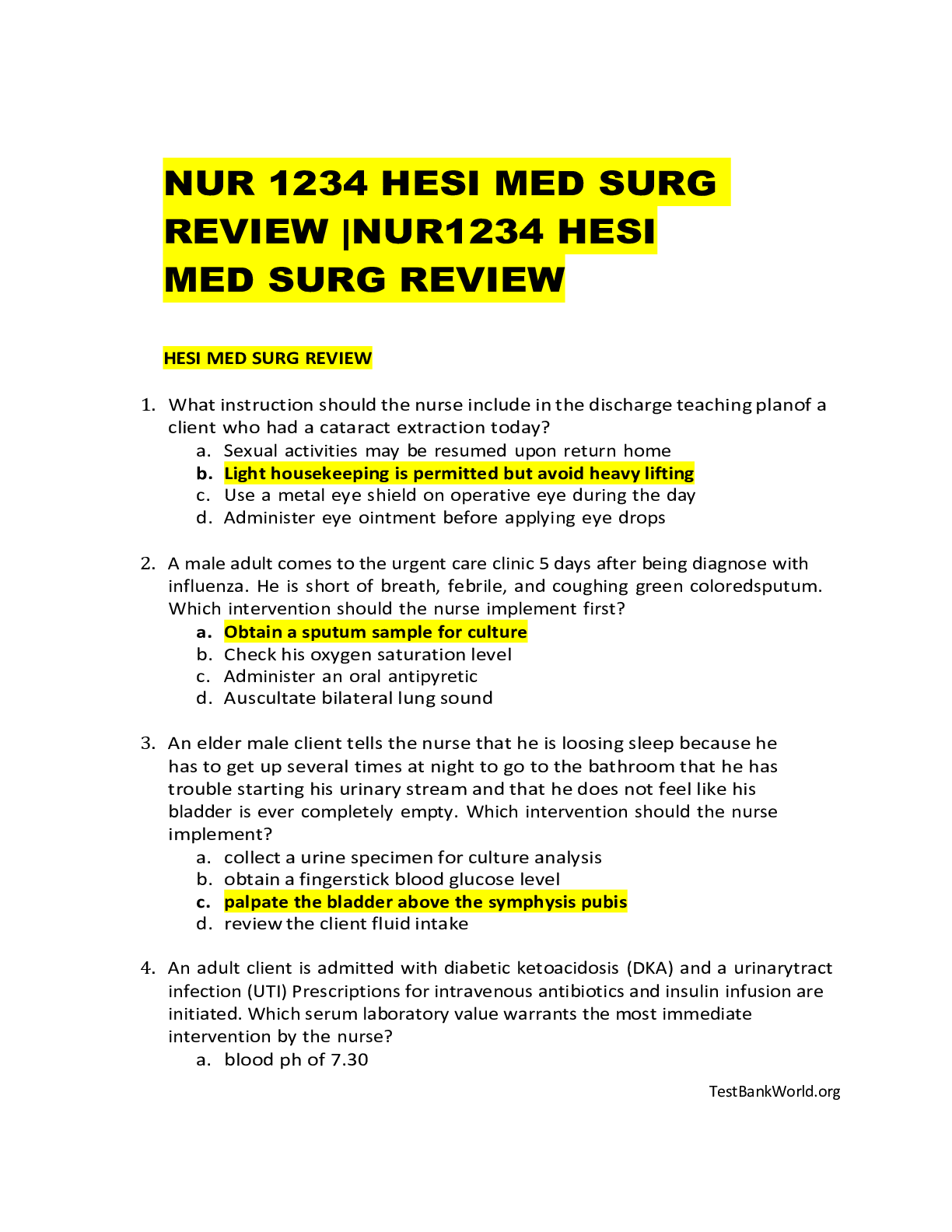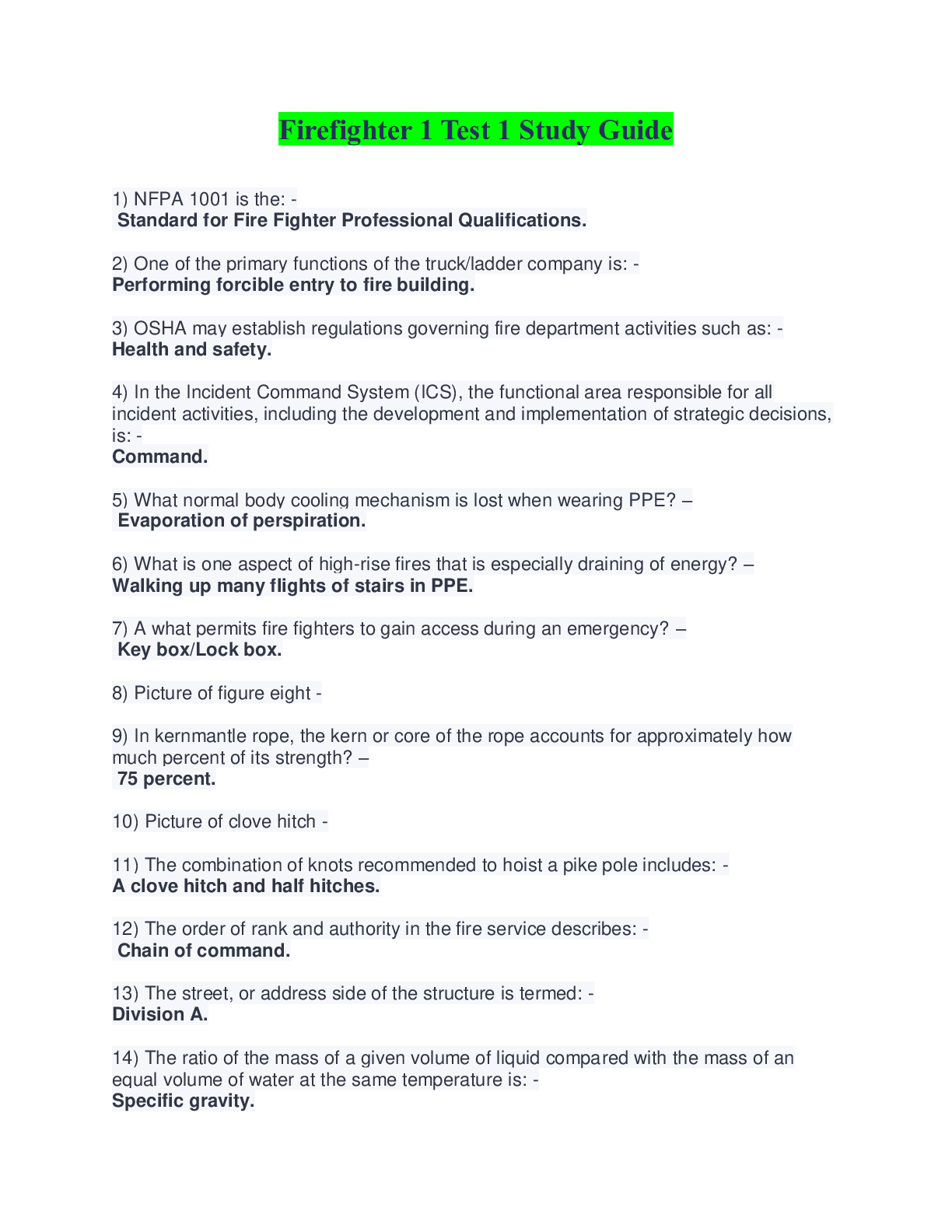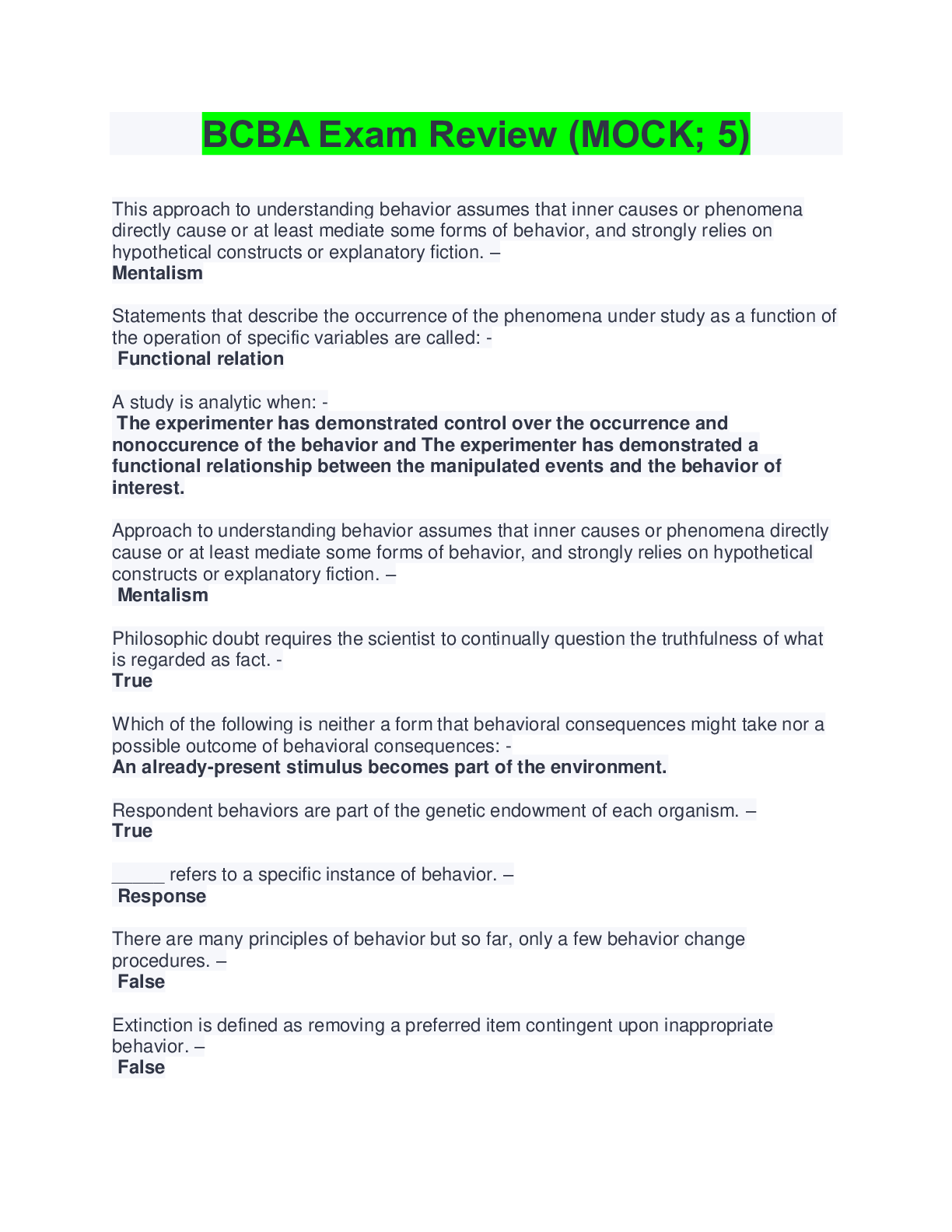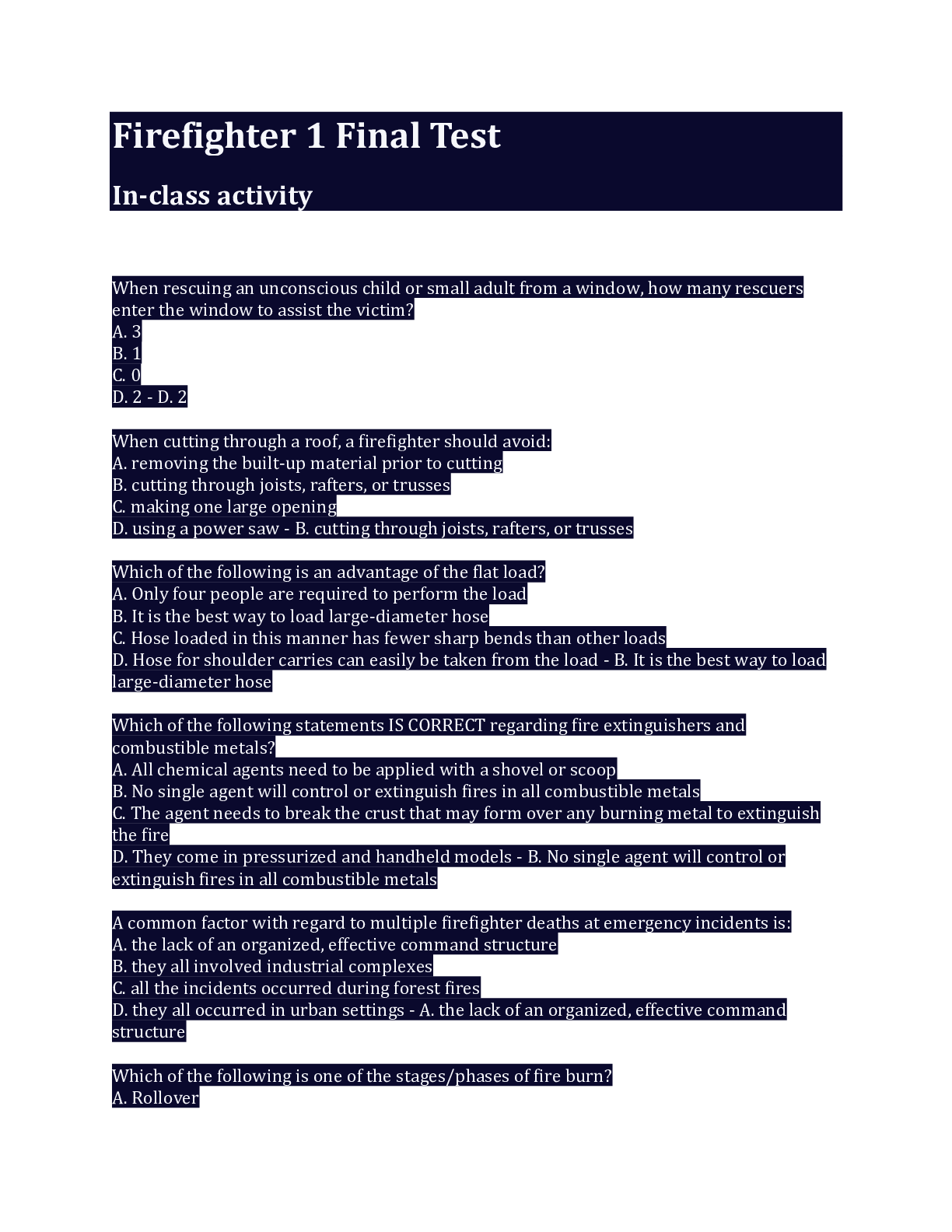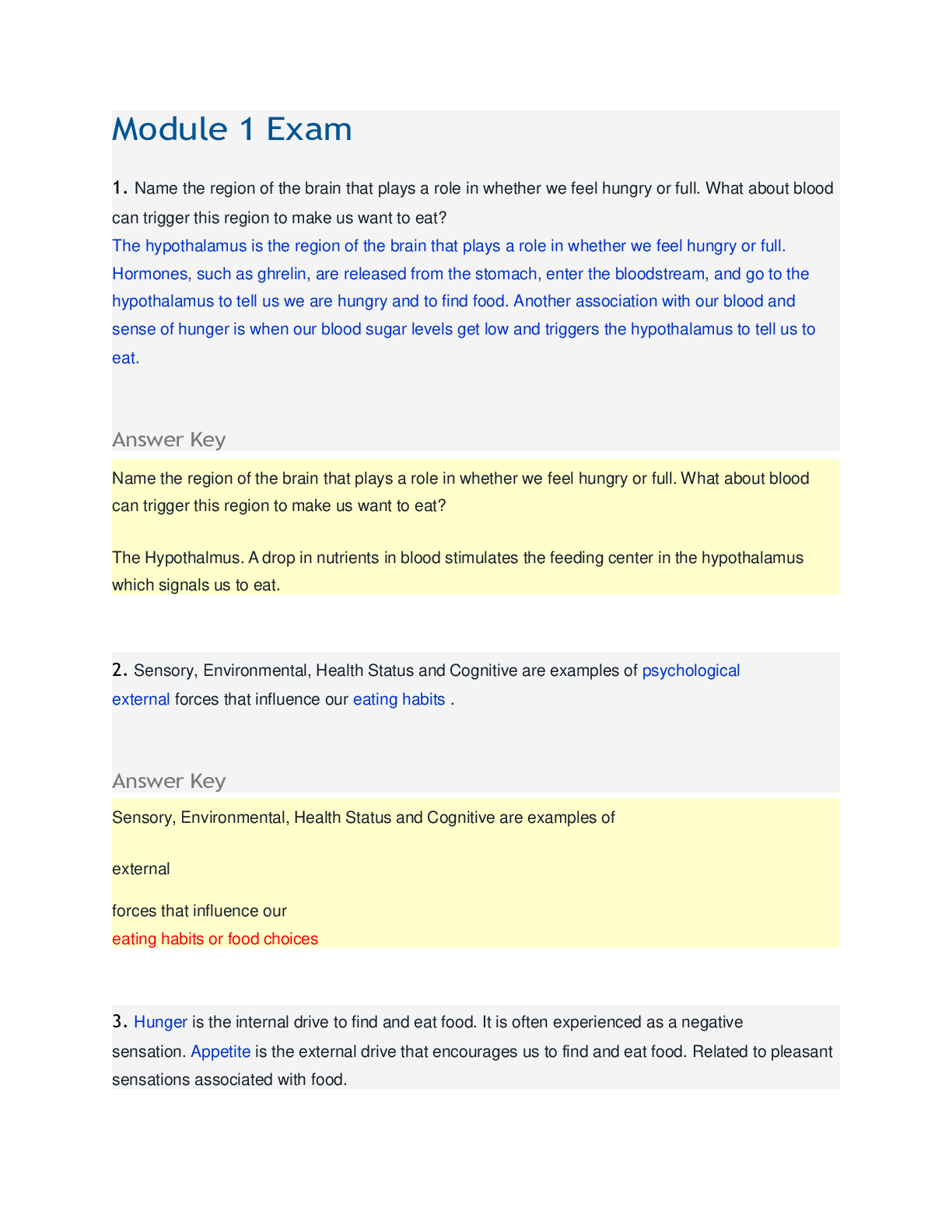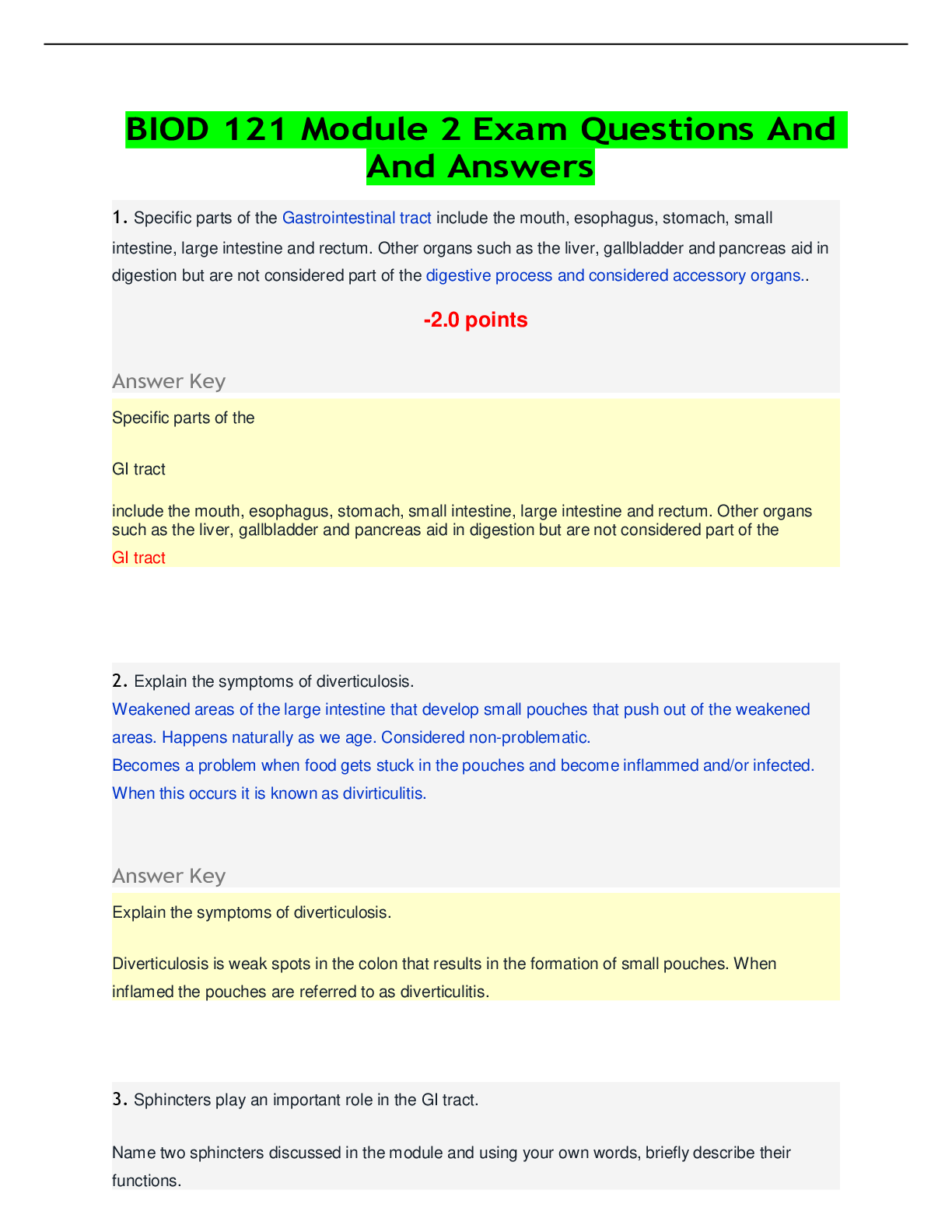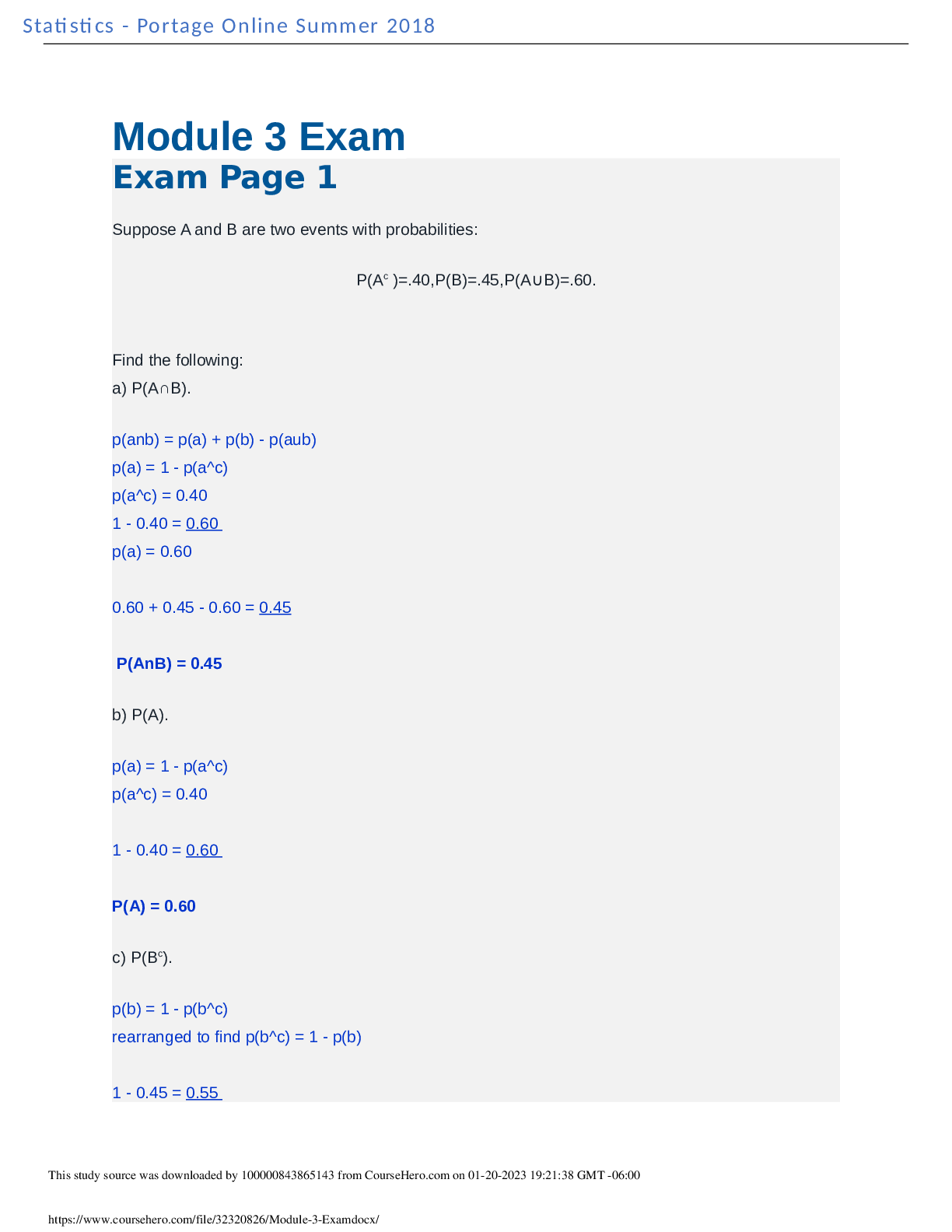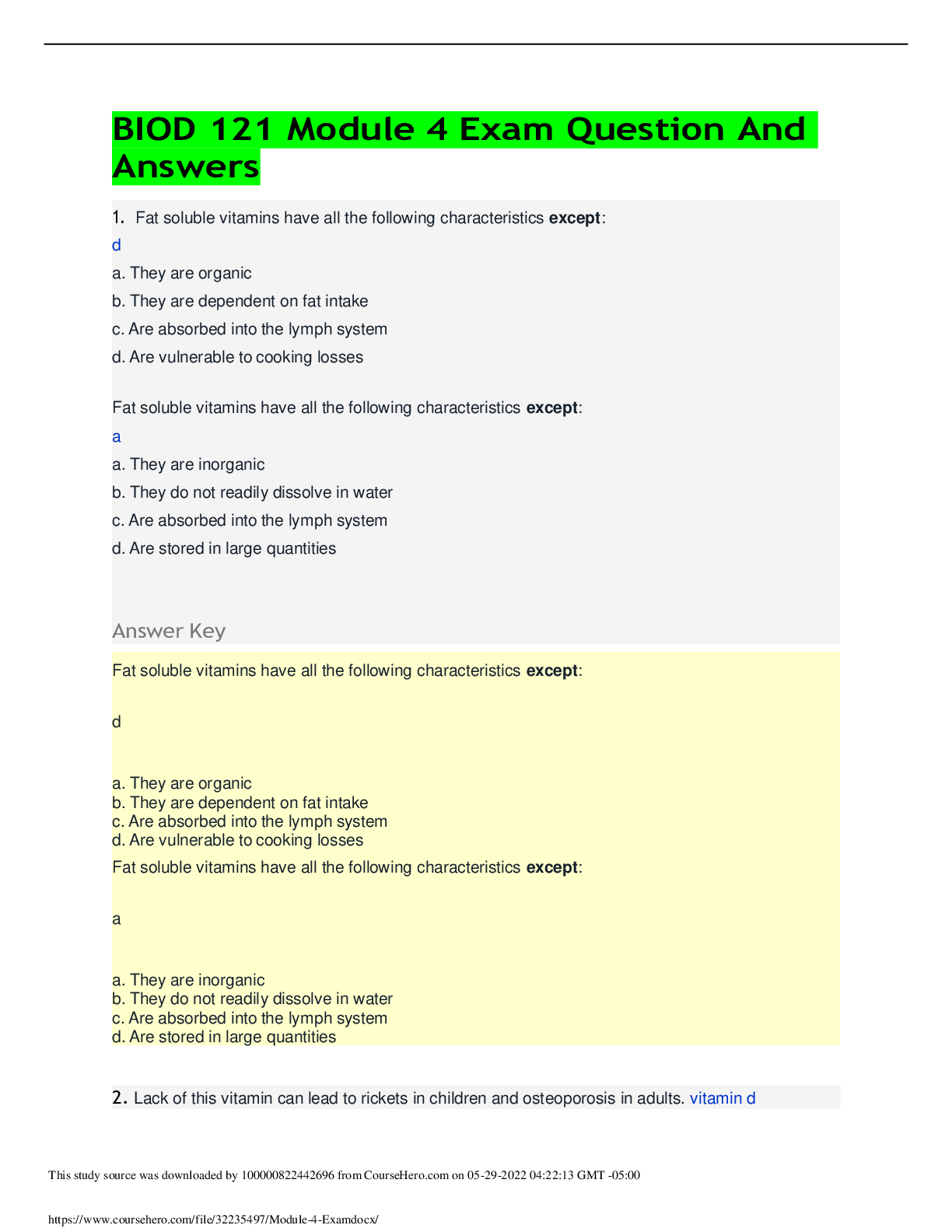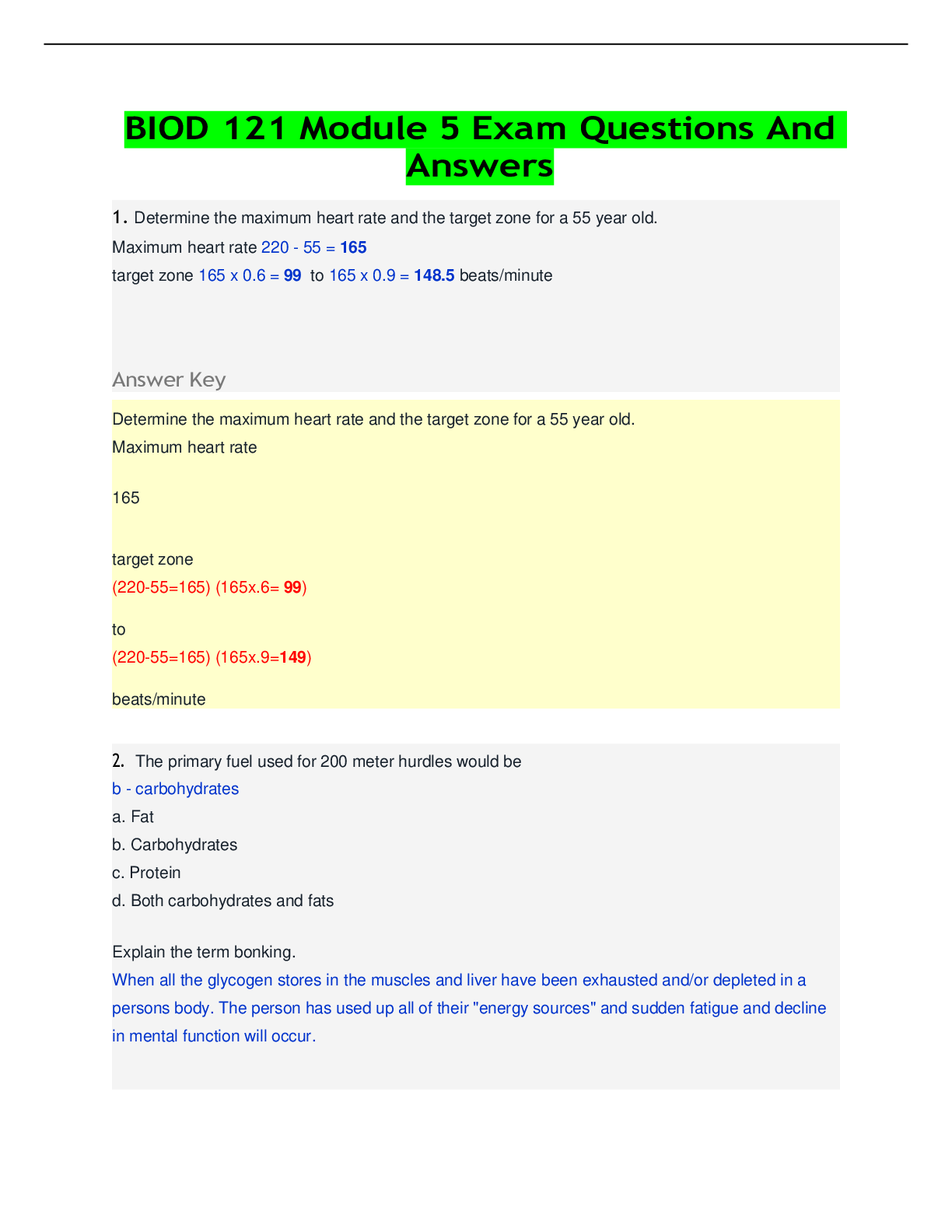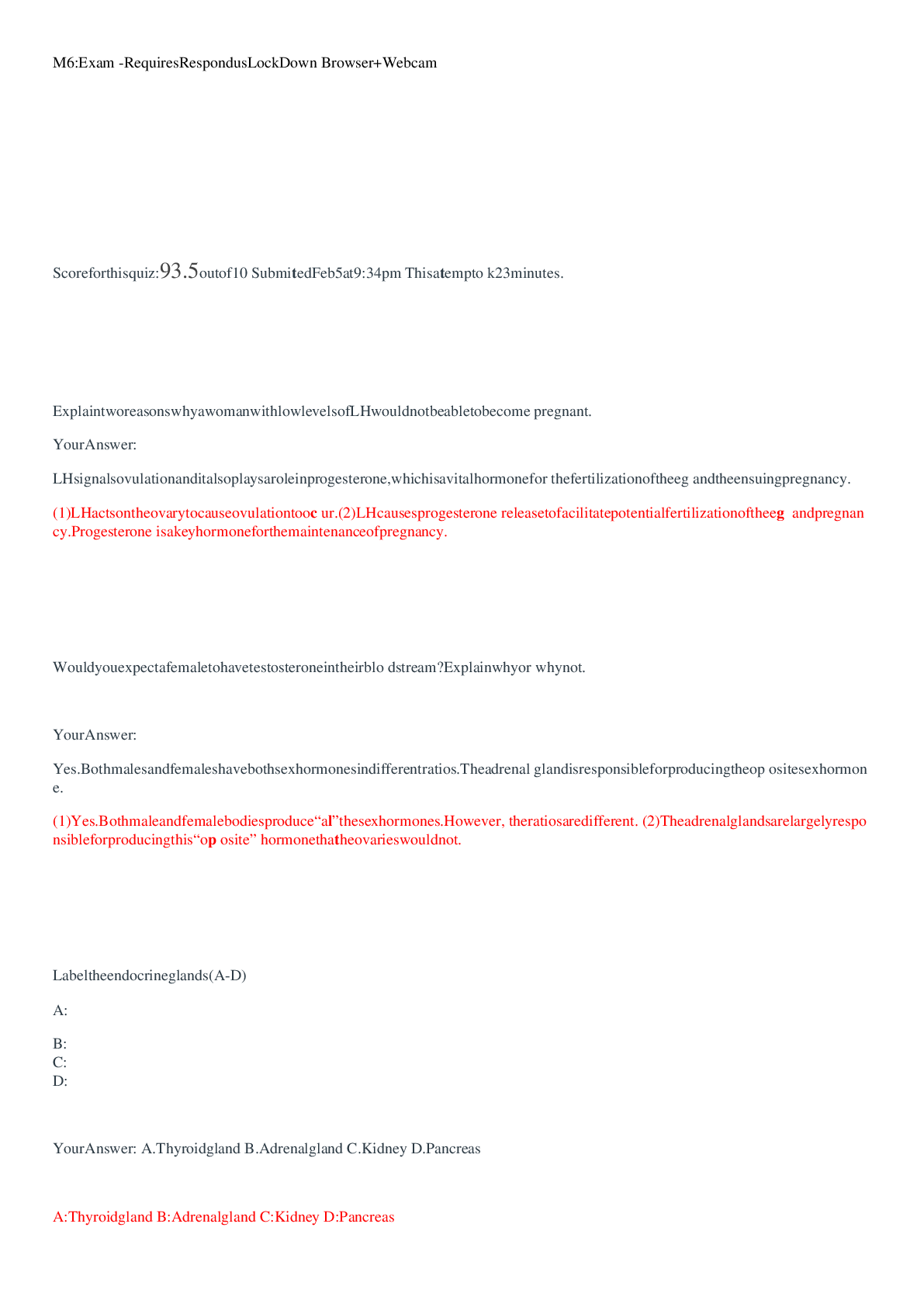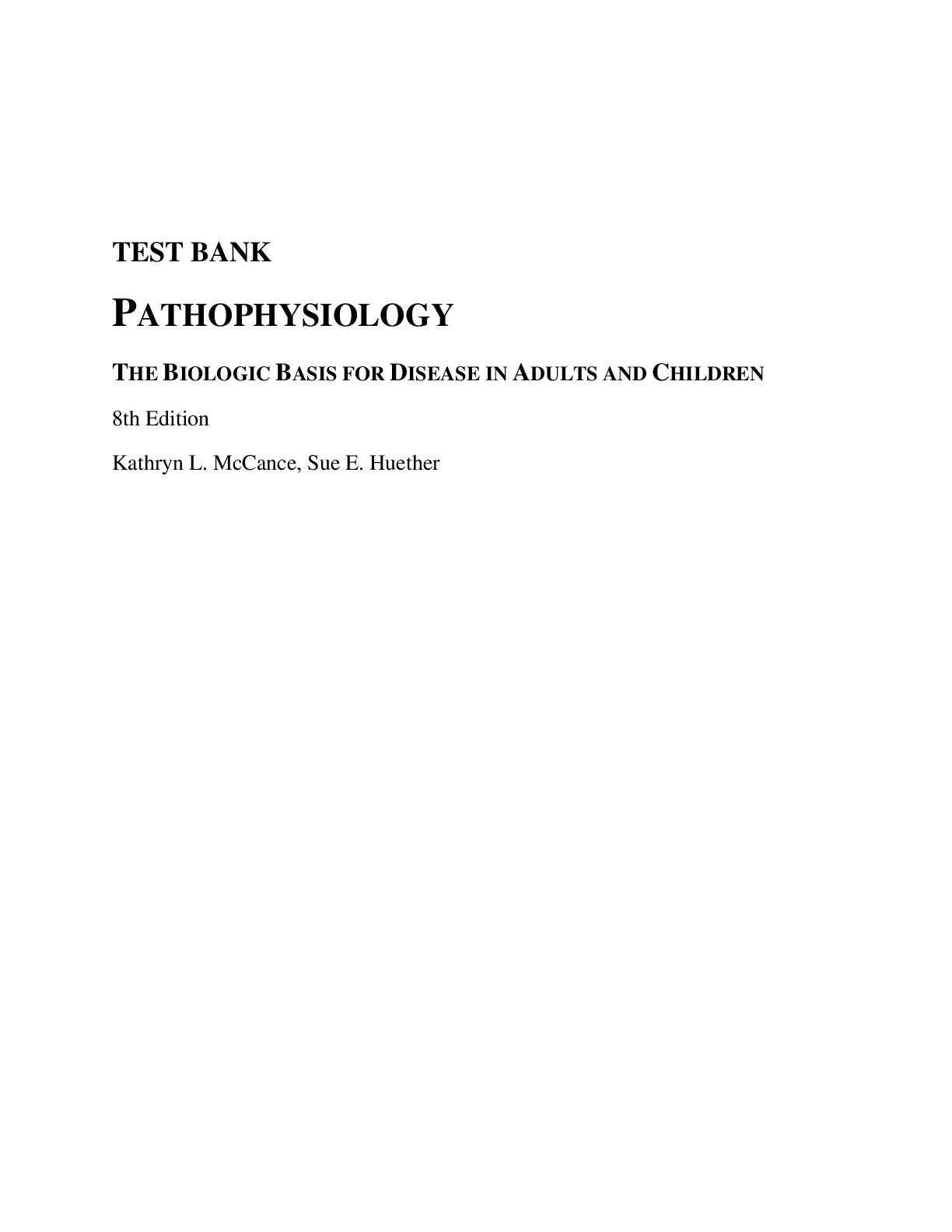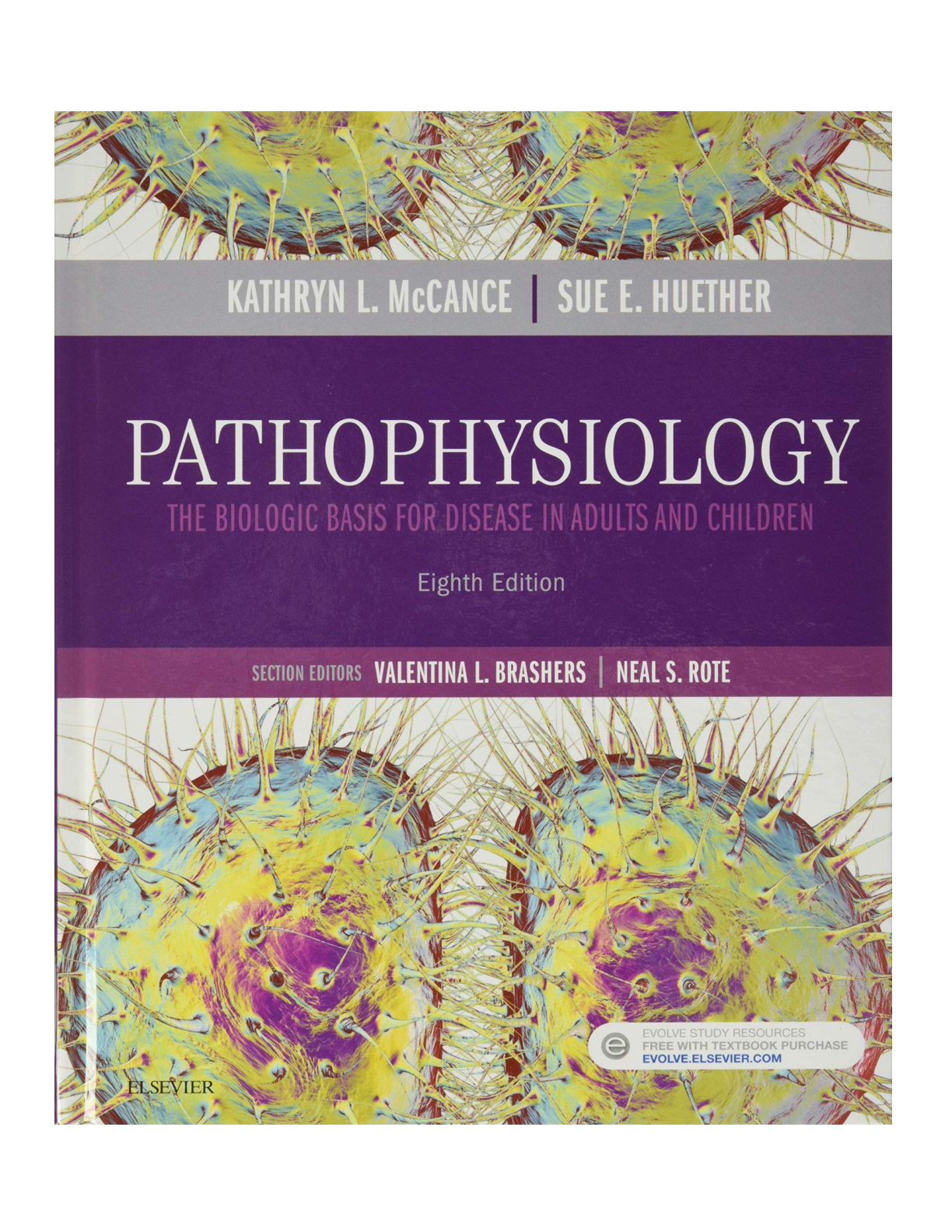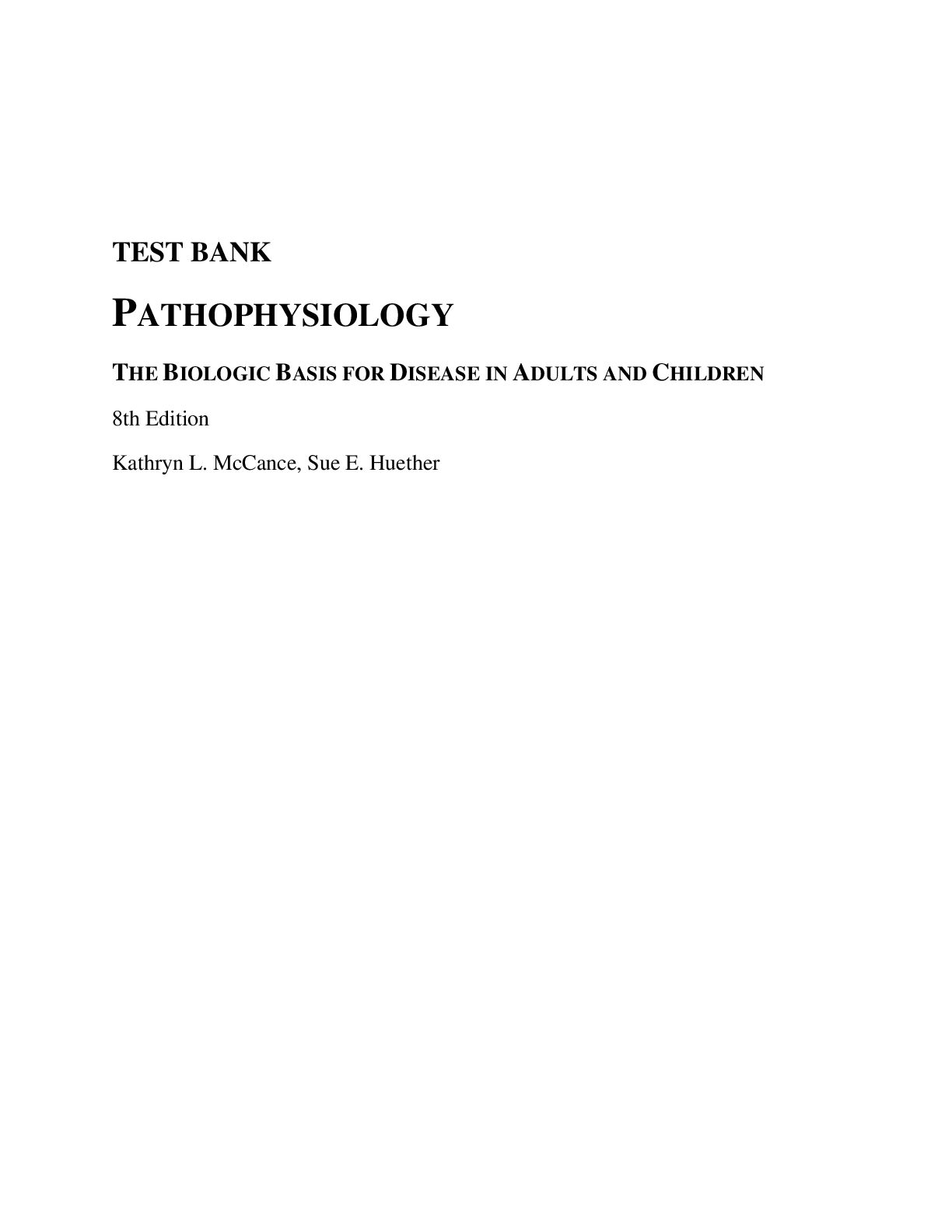*NURSING > EXAM > Chapter 01: Cellular Biology McCance/Huether: Pathophysiology: The Biologic Basis of Disease in Adul (All)
Chapter 01: Cellular Biology McCance/Huether: Pathophysiology: The Biologic Basis of Disease in Adults and Children, 8th Edition/; RATED A
Document Content and Description Below
Chapter 1 - Cellular Biology 3 Chapter 2 - Altered Cellular and Tissue Biology Environmental Agents 16 Chapter 3 - The Cellular Environment Fluids and Electrolytes Acids and Bases 28 Chapter 4 -... Genes and Genetic Diseases 41 Chapter 5 - Genes Environment-Lifestyle and Common Diseases 51 Chapter 6 - Epigenetics and Disease 59 Chapter 7 - Innate Immunity Inflammation 64 Chapter 8 - Adaptive Immunity 78 Chapter 9 - Alterations in Immunity and Inflammation 89 Chapter 10 - Infection 102 Chapter 11 - Stress and Disease 110 Chapter 12 - Cancer Biology 117 Chapter 13 - Cancer Epidemiology 129 Chapter 14 - Cancer in Children 135 Chapter 15 - Structure and Function of the Neurologic System 140 Chapter 16 - Pain Temperature Regulation Sleep and Sensory Function 151 Chapter 17 - Alterations in Cognitive Systems Cerebral Hemodynamics and Motor Function 165 Chapter 18 - Disorders of the Central and Peripheral Nervous Systems and the Neuromuscular Junction 179 Chapter 19 - Neurobiology of Schizophrenia Mood Disorders and Anxiety Disorders 189 Chapter 20 - Alterations of Neurologic Function in Children 195 Chapter 21 - Mechanisms of Hormonal Regulation 202 Chapter 22 - Alterations of Hormonal Regulation 211 Chapter 23 - Obesity and Disorders of Nutrition NEW 223 Chapter 24 - Structure and Function of the Reproductive Systems 228 Chapter 25 - Alterations of the Female Reproductive System 237 Chapter 26 - Alterations of the Male Reproductive System 246 Chapter 27 - Sexually Transmitted Infections 252 Chapter 28 - Structure and Function of the Hematologic System 260 Chapter 29 - Alterations of Erythrocyte Platelet and Hemostatic Function 270 Chapter 30 - Alterations of Leukocyte and Lymphoid Function 280 Chapter 31 - Alterations of Hematologic Function in Children 287 Chapter 32 - Structure and Function of the Cardiovascular and Lymphatic Systems 297 Chapter 33 - Alterations of Cardiovascular Function 309 Chapter 34 - Alterations of Cardiovascular Function in Children 323 Chapter 35 - Structure and Function of the Pulmonary System 331 Chapter 36 - Alterations of Pulmonary Function 341 Chapter 37 - Alterations of Pulmonary Function in Children 357 Chapter 38 - Structure and Function of the Renal and Urologic Systems 365 Chapter 39 - Alterations of Renal and Urinary Function 375 Chapter 40 - Alterations of Renal and Urinary Tract Function in Children 385 Chapter 41 - Structure and Function of the Digestive System 393 Chapter 42 - Alterations of Digestive Function 404 Chapter 43 - Alterations of Digestive Function in Children 415 Chapter 44 - Structure and Function of the Musculoskeletal System 424 Chapter 45 - Alterations of Musculoskeletal Function 436 Chapter 46 - Alterations of Musculoskeletal Function in Children 448 Chapter 47 - Structure Function and Disorders of the Integument 457 Chapter 48 - Alterations of the Integument in Children 468 Chapter 49 - Shock Multiple Organ Dysfunction Syndrome and Burns in Adults 476 Chapter 50 - Shock Multiple Organ Dysfunction Syndrome and Burns in Children 483 Chapter 01: Cellular Biology McCance/Huether: Pathophysiology: The Biologic Basis of Disease in Adults and Children, 8th Edition MULTIPLE CHOICE 1. Which statement best describes the cellular function of metabolic absorption? 2. Where is most of a cell’s genetic information, including RNA and DNA, contained? 3. Which component of the cell produces hydrogen peroxide (H2O2) by using oxygen to remove hydrogen atoms from specific substrates in an oxidative reaction? 4. Which cell component is capable of cellular autodigestion when it is released during cell injury? 5. Which cAMP-mediated response is related to antidiuretic hormone? 6. During which phase of the cell cycle is DNA synthesized? 7. What organic compound facilitates transportation across cell membranes by acting as receptors, transport channels for electrolytes, and enzymes to drive active pumps? 8. Understanding the various steps of proteolytic cascades may be useful in designing drug therapy for which human diseases? 9. Which structure prevents water-soluble molecules from entering cells across the plasma membrane? 10. A student asks for an explanation of the absolute refractory period of the action potential. What response by the professor is best? 11. Which form of cell communication is used to communicate within the cell itself and with other cells in direct physical contact? 12. Which mode of chemical signaling uses blood to transport communication to cells some distance away? [Show More]
Last updated: 2 years ago
Preview 1 out of 490 pages
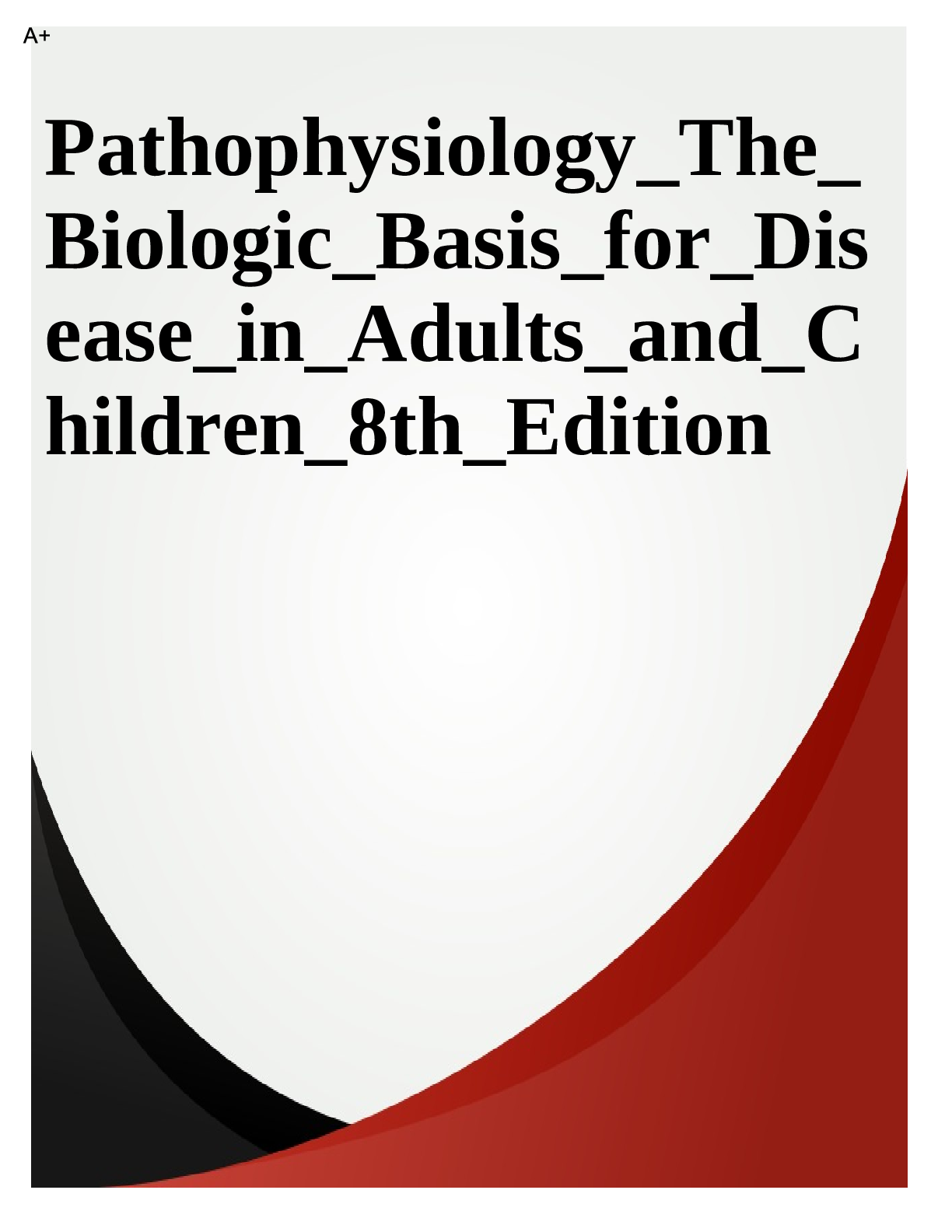
Buy this document to get the full access instantly
Instant Download Access after purchase
Buy NowInstant download
We Accept:

Reviews( 0 )
$19.50
Can't find what you want? Try our AI powered Search
Document information
Connected school, study & course
About the document
Uploaded On
Jul 22, 2021
Number of pages
490
Written in
Additional information
This document has been written for:
Uploaded
Jul 22, 2021
Downloads
0
Views
29


